In a world where technology intertwines with daily life, kitchen appliances have become more than just tools for cooking; they are extensions of our lifestyles. As such, the kitchen appliance industry is constantly evolving, driven by innovation, consumer demands, and stringent safety standards. This article delves into the ever-changing landscape of the European and American kitchen appliance markets, shedding light on the latest trends, the importance of certifications like GOST R IEC 60335-2-9, and the challenges faced by manufacturers in navigating a globalized market.
MarketOverview:ASnapshotofEuropeanandAmericanKitchenApplianceIndustries
The European and American kitchen appliance industries have witnessed remarkable growth over the years, each with its unique characteristics and market dynamics. Europe, known for its rich culinary heritage, boasts a diverse range of products that cater to both traditional and modern lifestyles. Across the Atlantic, the American market is characterized by innovation and a preference for convenience. Let’s take a closer look at the snapshot of these thriving industries.
In Europe, the kitchen appliance market is a blend of traditional brands with deep roots and newer entrants that are shaking things up with innovative designs and smart technology. Germany, Italy, and France are among the leading countries in this region, with a strong presence of established players like Siemens, Miele, and Gaggenau. These brands are known for their premium quality and are often associated with luxury and reliability.
The European market is highly regulated, with strict standards for safety, energy efficiency, and environmental impact. This has led to a segment that is not only diverse but also sustainable. For instance, the European Union’s Energy Label has become a crucial tool for consumers to make informed choices about energy-efficient appliances.
In the United States, the kitchen appliance market is vast and varied, with a significant focus on consumer convenience and technological integration. Brands like KitchenAid, LG, and Whirlpool dominate the scene, offering a wide array of products from basic to high-end. The American market is known for its innovation in appliances that make cooking easier and more enjoyable.
One notable trend in the American market is the rise of smart kitchen appliances. From refrigerators that can order groceries to ovens that can be controlled remotely, technology is playing a significant role in shaping consumer preferences. This focus on connectivity and control reflects the changing lifestyles of Americans, who are increasingly looking for ways to integrate technology into their daily routines.
Despite the differences, both European and American markets share certain commonalities. For instance, the demand for energy-efficient appliances is on the rise in both regions, driven by environmental concerns and cost savings. This has led to a surge in the adoption of appliances that meet the latest energy-saving standards, such as those certified under the Energy Star program in the U.S. and the EuP (Energy-related Products) Directive in Europe.
Another shared trait is the growing popularity of kitchen appliances that are designed with sustainability in mind. This includes not only energy efficiency but also the use of sustainable materials and the ability to be recycled or composted at the end of their life. Consumers are becoming more conscious of their ecological footprint and are actively seeking out eco-friendly options.
In Europe, the kitchen appliance market is also influenced by cultural preferences. For example, countries like Italy and Spain have a strong tradition of baking and cooking with wood-fired ovens, which has led to a niche market for high-quality, traditional cookware. Conversely, countries like the UK and the Netherlands have a preference for compact and efficient appliances due to their smaller living spaces.
On the other side of the Atlantic, the American kitchen appliance market is also shaped by regional differences. For instance, Southern states might have a higher demand for appliances that can handle the heat, while coastal regions might prioritize those that can withstand humidity and salt exposure.
The European and American kitchen appliance industries are not without their challenges. The rapid pace of technological advancements can sometimes outstrip consumer adoption rates, leading to a gap between innovation and consumer readiness. Additionally, the global supply chain disruptions have impacted pricing and availability, making it essential for manufacturers to be agile and adaptable.
In conclusion, the European and American kitchen appliance industries offer a fascinating glimpse into the evolving landscape of consumer technology and design. With a focus on safety, sustainability, and innovation, both markets are poised for continued growth. As manufacturers continue to push the boundaries of what is possible in kitchen appliances, consumers can look forward to a future filled with more efficient, connected, and aesthetically pleasing products.
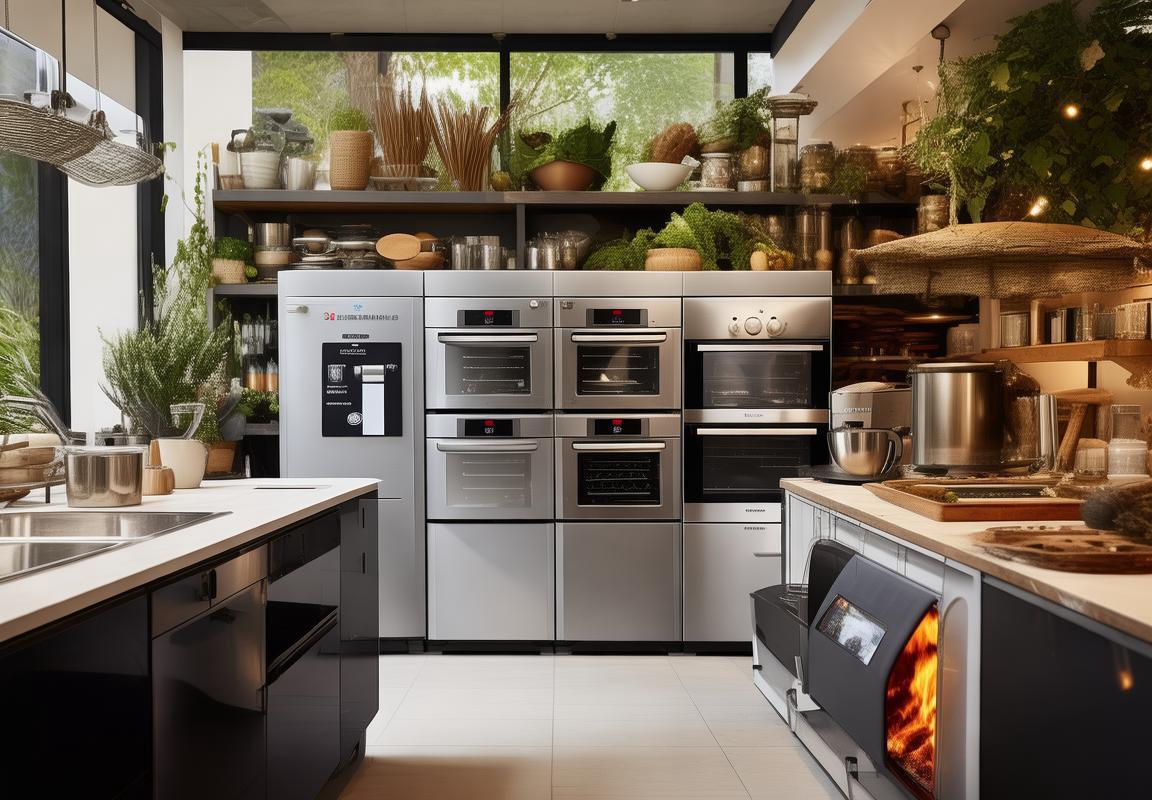
GOSTRIEC60335-2-9Certification:WhatItMeansforConsumers
In the vast landscape of kitchen appliances, consumers are often faced with a myriad of choices, each promising convenience, efficiency, and style. Amidst this array, one certification stands out as a beacon of safety and quality: GOST R IEC 60335-2-9. This standard, deeply rooted in both European and American markets, carries significant weight in ensuring that the appliances we bring into our homes are not just functional, but also safe.
Understanding the intricacies of GOST R IEC 60335-2-9 certification begins with recognizing its origin and scope. This international standard is a part of a larger set of regulations known as IEC 60335, which covers the safety of electrical household and similar appliances. GOST R, on the other hand, is the Russian state standard that incorporates these international standards into its regulatory framework.
For consumers, the GOST R IEC 60335-2-9 certification signifies a commitment to safety that goes beyond the basics. It covers a wide range of kitchen appliances, from ovens and stovetops to dishwashers and food processors. This certification process involves rigorous testing and assessment to ensure that these appliances meet stringent safety requirements, including electrical, thermal, mechanical, and functional safety.
One of the key aspects of GOST R IEC 60335-2-9 is the emphasis on electrical safety. Appliances must undergo tests to ensure that they can withstand voltage fluctuations, have proper insulation, and are designed to prevent electrical shocks. This is particularly crucial in kitchen environments where water and electricity are often present, increasing the risk of accidents.
Additionally, the certification process includes thermal testing to ensure that appliances can handle the heat they produce without posing a fire hazard. For instance, ovens and stovetops must be able to maintain safe temperatures without overheating or causing burns. This is a critical factor for consumers, especially those with young children or those who are elderly or disabled.
Mechanical safety is another vital component of the certification. Appliances must be durable and able to withstand normal use without breaking or malfunctioning. This includes testing the strength of materials used in construction and the integrity of moving parts, such as doors and drawers on refrigerators and ovens.
Functionality is also a key consideration. Appliances must perform as advertised, providing the intended service without compromising safety. This means that the controls must be user-friendly and the appliance must operate consistently, whether it’s a food processor or a coffee maker.
For consumers, the presence of the GOST R IEC 60335-2-9 certification can be a source of confidence. It reassures them that the appliance they are purchasing has been tested and deemed safe for use in their homes. This can be particularly reassuring in regions where product safety regulations may not be as stringent as in others.
Moreover, the certification process often involves third-party testing laboratories, which adds an extra layer of independence and credibility to the results. This means that the safety claims made by manufacturers are not just self-reported, but are backed by objective, external verification.
In the European market, where safety is a top priority, the GOST R IEC 60335-2-9 certification is often seen as a mark of quality. It can be a deciding factor for consumers who are looking for appliances that not only meet their needs but also adhere to high safety standards.
Similarly, in the American market, where consumer protection is paramount, the certification is recognized as a testament to an appliance’s safety. It is not uncommon for retailers to prominently display this certification on their products, as it can be a significant selling point.
In conclusion, the GOST R IEC 60335-2-9 certification is much more than just a piece of paper or a label on a kitchen appliance. It represents a comprehensive commitment to safety, quality, and reliability. For consumers, it is a reassuring symbol that the appliance they are purchasing has been rigorously tested and meets the highest standards of safety and performance.
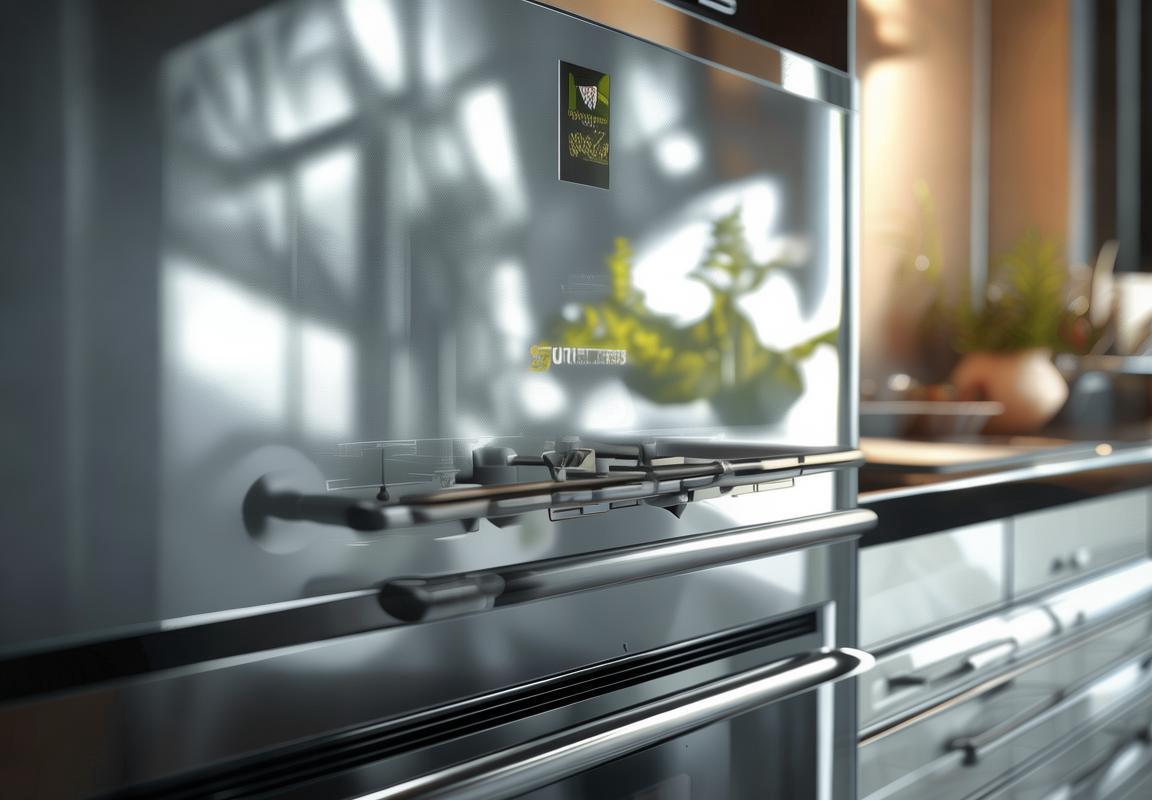
SafetyFirst:TheRoleofGOSTRIEC60335-2-9inEurope
In Europe, the kitchen appliance market is a testament to the region’s commitment to safety, innovation, and quality. At the heart of this commitment lies the GOST R IEC 60335-2-9 certification, a standard that has become synonymous with safety and reliability in the European consumer landscape.
The GOST R IEC 60335-2-9 standard is a subset of the broader IEC 60335 series, which outlines safety requirements for electrical household and similar appliances. In Europe, this particular standard focuses on the safety of electric motors and motor-compressor combinations used in kitchen appliances, such as refrigerators, dishwashers, and washing machines.
One of the key aspects of GOST R IEC 60335-2-9 is its rigorous testing process. Appliances that bear this certification have undergone thorough assessments to ensure they meet stringent safety criteria. This includes evaluating the electrical, mechanical, thermal, and fire safety of the appliances, as well as their resistance to abnormal conditions and the potential for electrical shock.
Consumers in Europe can take comfort in knowing that GOST R IEC 60335-2-9 certified appliances are less likely to pose a risk of fire or electrical hazards. The standard mandates the use of materials and components that can withstand high temperatures and electrical stresses, reducing the likelihood of malfunctions that could lead to accidents.
The impact of this certification on the European market is significant. Brands that adhere to GOST R IEC 60335-2-9 often see it as a competitive advantage. It not only assures customers of the appliance’s safety but also enhances the brand’s reputation for quality and reliability. This is particularly important in a market where consumers are increasingly aware of the importance of safety features in their home appliances.
Moreover, the standard helps to create a level playing field for manufacturers. By having a common set of safety requirements, it ensures that all appliances on the market meet a minimum standard of safety, regardless of the country of origin. This is crucial in Europe, where cross-border shopping is common, and consumers often have the option to purchase appliances from various countries.
In the event of a recall or safety alert, the presence of the GOST R IEC 60335-2-9 certification can be a lifesaver. It provides a clear indication that the appliance has been tested to a high standard and that the manufacturer has taken steps to ensure its safety. This can prevent unnecessary panic and confusion among consumers, as they can trust that the appliance has been vetted for potential hazards.
The standard also plays a role in the design and manufacturing processes. Manufacturers must consider safety from the outset, integrating safety features into the design of the appliance. This often leads to more durable and long-lasting products, as the focus on safety can also extend to the quality of materials and construction.
Furthermore, the GOST R IEC 60335-2-9 certification is not just a regulatory requirement; it’s also a reflection of the European Union’s broader commitment to consumer protection. The EU has a strong track record of ensuring that products on the market are safe and do not pose a risk to public health and safety.
In conclusion, the GOST R IEC 60335-2-9 certification is a cornerstone of safety in the European kitchen appliance market. It provides consumers with peace of mind, manufacturers with a competitive edge, and the European Union with a framework for ensuring that its citizens are protected from the outset. As the market continues to evolve, the role of this certification in upholding safety standards remains steadfast, underpinning the trust that consumers place in their kitchen appliances.

InnovationsandTrends:What’sNewinAmericanKitchenAppliances?
In the ever-evolving landscape of kitchen appliances, the American market is a hotbed of innovation and cutting-edge technology. From smart features to energy efficiency, here’s a glimpse into what’s new in American kitchen appliances.
Smart Integration and ConnectivityModern kitchen appliances in the U.S. are increasingly embracing smart technology. From refrigerators that can order groceries to ovens that can be controlled remotely via a smartphone app, the integration of smart features is reshaping the way we interact with our kitchen tools. This connectivity not only adds convenience but also enhances the overall user experience.
Energy Efficiency and SustainabilityEnergy efficiency has become a cornerstone in the American kitchen appliance industry. Manufacturers are pushing the boundaries with appliances that consume less energy, thereby reducing utility bills and environmental impact. Features like LED lighting, programmable settings, and energy-saving modes are becoming standard, reflecting a growing consumer demand for eco-friendly products.
Advanced Cooking TechnologiesAmerican kitchen appliances are not just about convenience; they’re also about culinary excellence. High-tech cooking features like induction cooktops, convection ovens, and precise temperature control are becoming more prevalent. These technologies allow for faster cooking times, more even heat distribution, and the ability to achieve professional-grade results in the comfort of one’s home kitchen.
Customization and PersonalizationConsumers today are looking for appliances that not only perform well but also complement their personal style. American brands are responding by offering a wide range of designs and finishes, from sleek stainless steel to retro colors. Additionally, some appliances come with customizable settings and features, allowing users to tailor their appliances to their specific needs and preferences.
Healthy Cooking OptionsHealth-conscious consumers are driving the demand for kitchen appliances that promote healthy cooking methods. Induction cooktops, for example, are favored for their ability to maintain a consistent temperature, reducing the risk of burning and the need for excessive oil. Air fryers and steam ovens are also gaining popularity, as they offer healthier alternatives to traditional frying and boiling.
Interactive and Educational FeaturesSome American kitchen appliances are not just tools but also educational companions. For instance, smart ovens and ranges can provide cooking tips and recipes, while some refrigerators have built-in recipe books and even suggest meal plans based on the contents of the fridge. These interactive features aim to make cooking more enjoyable and less intimidating for new chefs.
Smart Kitchen EcosystemsThe future of American kitchen appliances is not just about individual devices but about creating a cohesive smart kitchen ecosystem. Brands are developing appliances that can communicate with each other, offering seamless integration and automation. Imagine a scenario where your coffee maker starts brewing coffee as soon as your alarm goes off, or your oven preheats in anticipation of a new recipe you’ve selected on your smartphone.
Sustainability and Eco-Friendly MaterialsSustainability is a growing concern, and American appliance manufacturers are responding with eco-friendly materials and designs. From appliances made with recycled materials to those that are designed for easy disassembly and recycling, the industry is taking steps to reduce its environmental footprint.
In conclusion, the American kitchen appliance market is a dynamic and innovative space, with a focus on smart technology, energy efficiency, and personalized experiences. As consumers continue to seek out appliances that not only make their lives easier but also align with their values, the industry is poised to keep pushing the boundaries of what’s possible in the kitchen.
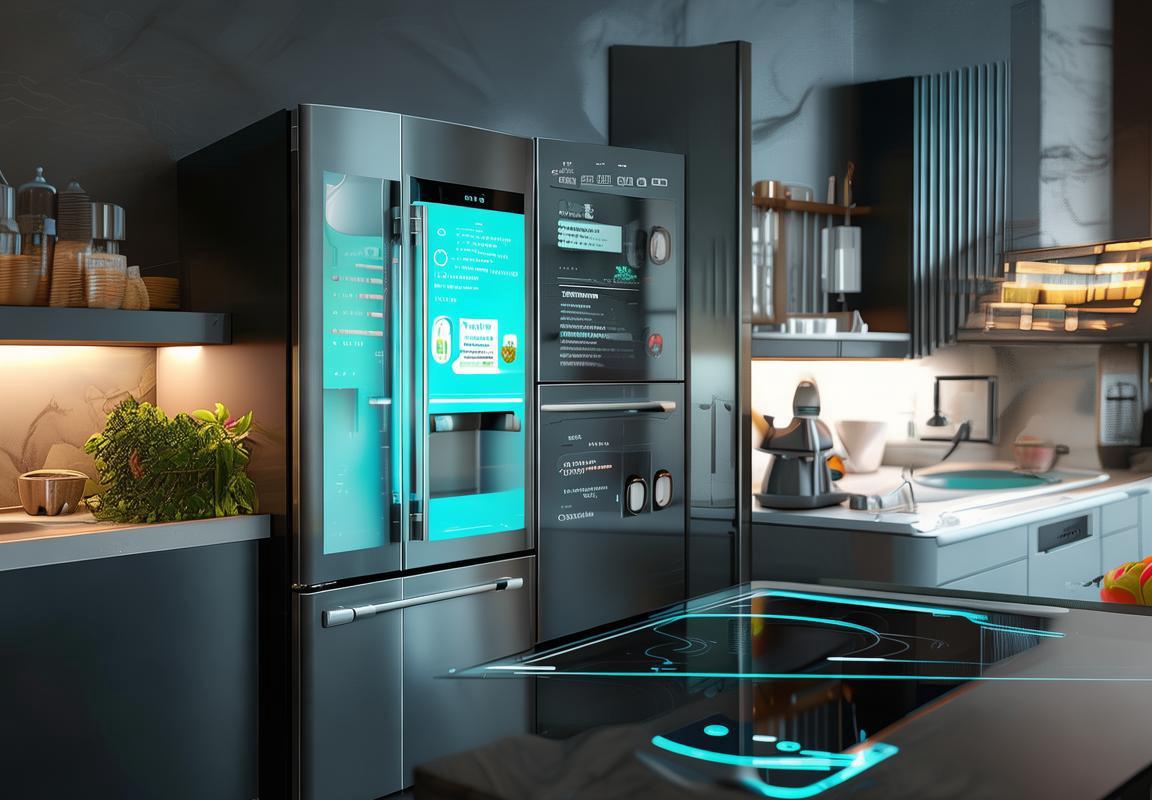
Cross-ContinentCollaboration:HowEuropeanandAmericanBrandsareLearningfromEachOther
In the ever-evolving landscape of kitchen appliances, European and American brands are not only competing but also collaborating to bring the best of both worlds to consumers. This cross-continent collaboration has led to a fascinating exchange of ideas, technologies, and design philosophies. Here’s a closer look at how these brands are learning from each other.
European brands, known for their sophisticated designs and emphasis on sustainability, have introduced innovative features that have caught the attention of American consumers. For instance, the integration of smart technology in kitchen appliances has been a significant trend in Europe. Smart refrigerators, ovens, and dishwashers that can be controlled remotely through apps have become increasingly popular, reflecting a shift towards convenience and connectivity.
American brands, on the other hand, have long been associated with power and efficiency. They’ve taken notice of Europe’s focus on energy-saving and have started to incorporate more eco-friendly features into their appliances. Energy Star-rated dishwashers and refrigerators are now more common, showcasing a commitment to environmental responsibility that was once a niche market in the U.S.
Design has also been a point of interest for both sides. European kitchen appliances often feature sleek, modern aesthetics that blend seamlessly into contemporary kitchens. American brands have taken note and are now offering more stylish and minimalist designs to cater to the growing demand for aesthetic appeal. The result is a fusion of form and function that appeals to a broad consumer base.
Safety standards have long been a hallmark of European appliances, and American brands have taken this to heart. The rigorous testing and certification processes, such as GOST R IEC 60335-2-9, that European appliances undergo have influenced American manufacturers to raise their own safety standards. This has led to a more robust and reliable product for consumers on both continents.
Innovation isn’t just about technology or design; it’s also about user experience. European brands have been at the forefront of user-friendly features, such as intuitive interfaces and quiet operation. American brands have responded by improving their own appliances’ usability, making them more accessible to a wider range of users, including those with disabilities.
The rise of the gourmet kitchen culture has also played a role in this collaboration. European brands have brought their expertise in professional-grade appliances to the American market, offering high-end ranges, cooktops, and ventilation systems that are perfect for serious home chefs. Conversely, American brands have introduced more durable and versatile appliances that can withstand the rigors of commercial use in a home kitchen setting.
Marketing strategies have also been a source of inspiration. European brands have a reputation for storytelling in their marketing campaigns, which American brands have adopted to create a stronger emotional connection with consumers. This approach has helped American appliances stand out in a crowded market and has been well-received by European consumers as well.
The global kitchen appliance market is becoming more interconnected, with brands from different continents influencing each other in positive ways. For example, the popularity of induction cooktops in Europe has led American brands to offer more options in this category, while the American obsession with large, powerful refrigerators has prompted European manufacturers to create models with more advanced cooling systems and better energy efficiency.
This cross-continent collaboration is not just about copying what the other side is doing; it’s about creating a new standard that combines the best of both worlds. By learning from each other, European and American brands are pushing the boundaries of innovation and delivering products that not only meet but exceed consumer expectations.
In conclusion, the exchange of ideas and technologies between European and American kitchen appliance brands is a testament to the global nature of today’s markets. It’s a win-win situation for consumers, who are treated to a wider variety of high-quality, innovative products that cater to their diverse needs and preferences. As this collaboration continues to flourish, we can expect to see even more exciting developments in the world of kitchen appliances.

ConsumerPreferences:WhatDoEuropeansandAmericansLookforinKitchenAppliances?
In the ever-evolving landscape of kitchen appliances, consumer preferences are shifting with the times. Understanding what Europeans and Americans seek in their kitchen appliances is crucial for brands aiming to capture these markets. From sleek designs to eco-friendly features, let’s delve into the nuanced preferences of these two distinct consumer groups.
European consumers tend to value the following in their kitchen appliances:
-
Efficiency: Energy-saving technologies are highly regarded in Europe, reflecting the continent’s commitment to sustainability. Appliances with smart energy management systems and A+ or A++ ratings are often top choices.
-
Style: European kitchens are known for their chic and modern aesthetics. Consumers look for appliances that not only serve their functional needs but also complement the aesthetic of their homes. Sleek, stainless steel finishes and minimalist designs are in vogue.
-
Quality: European brands are often synonymous with quality, and this extends to kitchen appliances. Consumers in Europe seek appliances that are durable, reliable, and built to last, often opting for well-known, reputable brands.
-
Innovation: Cutting-edge technology is a must-have for many European consumers. Smart kitchen appliances that offer connectivity, remote control, and integration with home automation systems are becoming increasingly popular.
American consumers, on the other hand, have a different set of preferences:
-
Versatility: Americans prefer kitchen appliances that can handle a variety of tasks efficiently. Appliances with multiple settings and programmable features cater to the diverse needs of American households.
-
Space-Saving: With the popularity of open-concept living spaces, Americans are looking for kitchen appliances that maximize space without compromising on functionality. Compact appliances and multifunctional units are in demand.
-
Performance: Performance is a key factor for American consumers. They want appliances that can handle high volumes and are designed to last. Appliances with robust motors and strong performance ratings are favored.
-
Brand Reputation: Similar to Europe, brand reputation is significant in the American market. Consumers are willing to pay a premium for appliances from trusted brands known for their quality and reliability.
-
Connectivity: The rise of the smart home has influenced American preferences as well. Connectivity features, such as Wi-Fi-enabled appliances and apps for monitoring and controlling appliances remotely, are becoming more important.
While there are distinct differences in preferences, there are also areas where European and American consumers converge:
-
Safety: Both markets prioritize safety, which is why GOST R IEC 60335-2-9 certification is crucial. Consumers in both regions look for appliances that meet rigorous safety standards.
-
Health and Wellness: With a growing emphasis on health and wellness, both European and American consumers are seeking appliances that can contribute to a healthier lifestyle. This includes features like air filtration systems in ovens and dishwashers, and programmable cooking modes that allow for healthier cooking options.
-
Convenience: Convenience is a universal desire. Consumers across both continents are drawn to appliances that make their lives easier, such as self-cleaning ovens, programmable refrigerators, and smart kitchen gadgets.
-
Durability: While Americans may value versatility and performance, they also seek appliances that are durable and long-lasting, just as Europeans do.
Understanding these preferences is essential for brands looking to enter or expand in these markets. By tailoring their products to meet the specific needs and desires of European and American consumers, manufacturers can gain a competitive edge and build a loyal customer base. Whether it’s through energy-efficient technology, sleek design, or innovative features, the kitchen appliance industry is continually evolving to meet the ever-changing demands of consumers worldwide.
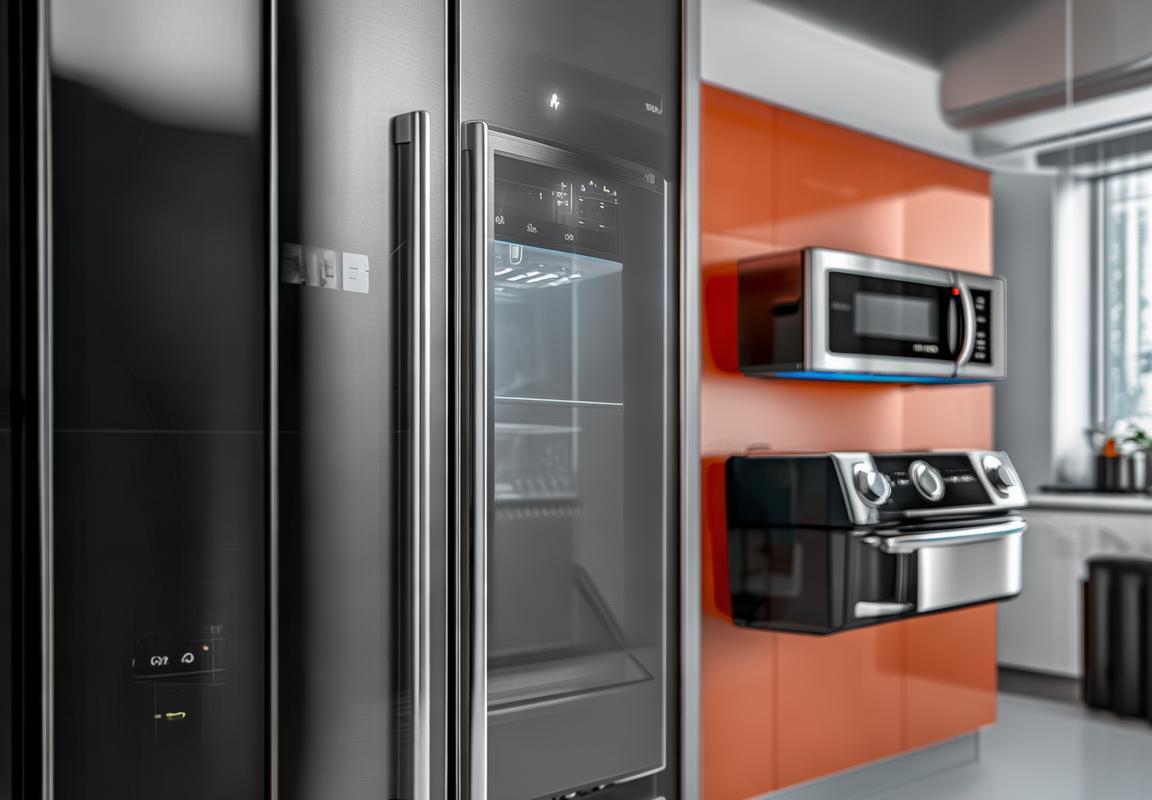
MarketChallenges:NavigatingRegulatoryDifferencesandConsumerDemands
In the dynamic landscape of the kitchen appliance market, navigating the complexities of regulatory differences and understanding consumer demands is a critical challenge for manufacturers. Here’s an in-depth look at the intricacies involved:
Understanding Regional RegulationsThe kitchen appliance industry is heavily regulated, with each region having its own set of standards and certifications. For instance, Europe adheres to the stringent CE marking, which encompasses a range of safety, health, and environmental protection requirements. Meanwhile, the United States has its own standards, such as those set by the Underwriters Laboratories (UL) and the Consumer Product Safety Commission (CPSC). Manufacturers must ensure that their products meet these varied regulations, which can be a daunting task due to the differences in testing procedures and certification requirements.
Consumer Safety and ComplianceSafety is paramount in the kitchen appliance industry, and compliance with international standards like GOST R IEC 60335-2-9 is a cornerstone of this. This standard, which covers safety requirements for electrical household and similar appliances, is not just about meeting legal requirements but also about building trust with consumers. Consumers are increasingly aware of the importance of safety features in appliances, and manufacturers that prioritize compliance are more likely to establish a loyal customer base.
The Complexity of Global Supply ChainsGlobalization has made it possible for manufacturers to source components and materials from all corners of the world. However, this interconnectedness also brings challenges. Ensuring that all parts of a kitchen appliance meet the necessary safety and quality standards across different regions can be complicated. Manufacturers must work closely with suppliers to ensure that every component adheres to the relevant regulations, which can be a complex and time-consuming process.
Adapting to Diverse Consumer NeedsConsumer preferences vary greatly across different markets. For example, European consumers often prioritize energy efficiency and eco-friendly features, while Americans might be more focused on the latest technology and convenience. Navigating these preferences requires a deep understanding of local markets and the ability to adapt product offerings accordingly. This might involve designing appliances with specific features, such as integrated smart technology or energy-saving modes, that resonate with the target audience.
Balancing Innovation and TraditionInnovation is key to staying competitive in the kitchen appliance market, but it must be balanced with the need to meet established standards. For instance, while incorporating advanced technology like voice control or touchless operation is trendy, these features must be integrated in a way that doesn’t compromise the appliance’s safety or reliability. Manufacturers must find innovative solutions that not only push the boundaries of what’s possible but also do so while maintaining the highest levels of quality and safety.
Dealing with Market VolatilityThe kitchen appliance market is subject to economic fluctuations and changing consumer trends. Manufacturers must be agile enough to respond to these changes quickly. For example, during economic downturns, consumers may prioritize value over luxury, leading to a shift in demand for more affordable or energy-efficient appliances. Understanding these market dynamics and adjusting production and marketing strategies accordingly is essential for long-term success.
The Importance of Certification and TestingCertification and testing play a crucial role in ensuring that kitchen appliances meet the necessary standards. Manufacturers must invest in rigorous testing facilities and certification processes to verify that their products are compliant with all relevant regulations. This not only protects consumers but also helps to mitigate the risk of recalls or product liability issues.
In conclusion, the kitchen appliance market presents a myriad of challenges when it comes to navigating regulatory differences and meeting consumer demands. From understanding regional regulations to balancing innovation with safety, manufacturers must be adept at managing these complexities to thrive in this competitive industry.

FutureOutlook:PredictionsfortheEuropeanandAmericanKitchenApplianceMarkets
In the ever-evolving landscape of kitchen appliances, the European and American markets are not only distinct but also interdependent. As technology advances and consumer needs shift, both regions are witnessing a dynamic interplay of innovations and trends. Here’s a glimpse into the future outlook for these markets, with a focus on the latest predictions.
The European market is poised for a surge in smart kitchen appliances, driven by an aging population and a growing emphasis on convenience and efficiency. Smart refrigerators with built-in cameras, voice assistants, and predictive maintenance capabilities are expected to become the norm. Meanwhile, American consumers are leaning towards energy-efficient appliances, with a particular interest in solar-powered options that align with sustainability trends.
The integration of IoT (Internet of Things) technology is another significant trend. In Europe, we’re seeing a rise in kitchen appliances that can be controlled remotely via smartphone apps, offering homeowners the ability to manage their kitchen environment from anywhere. In the U.S., this trend is also prevalent, but there’s a particular focus on home automation systems that can link various appliances for seamless operation.
As health and wellness become increasingly important, kitchen appliances are being designed to cater to these preferences. European consumers are gravitating towards appliances that can help them make healthier choices, such as sous-vide cookers for precise temperature control and air fryers for healthier frying alternatives. In the U.S., there’s a similar shift, but with a more pronounced interest in appliances that promote home fitness and nutrition, like countertop juicers and air purifiers.
Sustainability is a driving force in both markets, but in different ways. In Europe, there’s a strong push towards the use of recycled materials and energy-efficient designs. American consumers, on the other hand, are more likely to invest in appliances that can be easily recycled at the end of their life cycle or that are certified by third-party environmental organizations.
The rise of the “farm-to-table” movement has also influenced the kitchen appliance market. European brands are introducing more appliances that facilitate the preparation of fresh, locally-sourced ingredients, such as induction cooktops for quick and precise cooking. In the U.S., there’s a parallel trend, with a focus on appliances that make it easier to grow your own food, like countertop gardens and hydroponic systems.
The future of the kitchen appliance market is also about personalization. European consumers are embracing appliances that can be customized to individual preferences, such as ovens with programmable settings for various types of cooking. American consumers, while also interested in personalization, are more likely to seek appliances that adapt to their habits, like smart fridges that learn your shopping patterns and meal preferences.
When it comes to kitchen appliances, design remains a crucial factor. European brands are known for their sleek, modern aesthetics, while American appliances often feature a blend of functionality and style. The future will likely see a continuation of this trend, with appliances that not only perform well but also complement the interior design of homes.
The rise of e-commerce has also changed the landscape of the kitchen appliance market. Both European and American consumers are increasingly turning to online retailers for their appliance needs, which has led to a shift in the way manufacturers market their products. The importance of reviews and ratings online cannot be overstated, as they play a significant role in consumer purchasing decisions.
In the realm of technology, voice control is becoming a standard feature in many kitchen appliances. While this is already prevalent in Europe, the U.S. is catching up quickly, with major brands introducing voice-activated appliances that can be controlled through smart speakers.
Lastly, the rise of the gig economy and the increasing number of single-person households is prompting appliance manufacturers to consider the size and functionality of their products. Smaller, more compact appliances that are easy to use and maintain are becoming more popular, as they cater to the needs of busy individuals and those living in smaller spaces.
In conclusion, the future of the European and American kitchen appliance markets is characterized by a confluence of technological advancements, consumer preferences, and environmental consciousness. As these markets continue to evolve, it’s clear that innovation and adaptability will be key to success for manufacturers looking to capture a share of this dynamic industry.
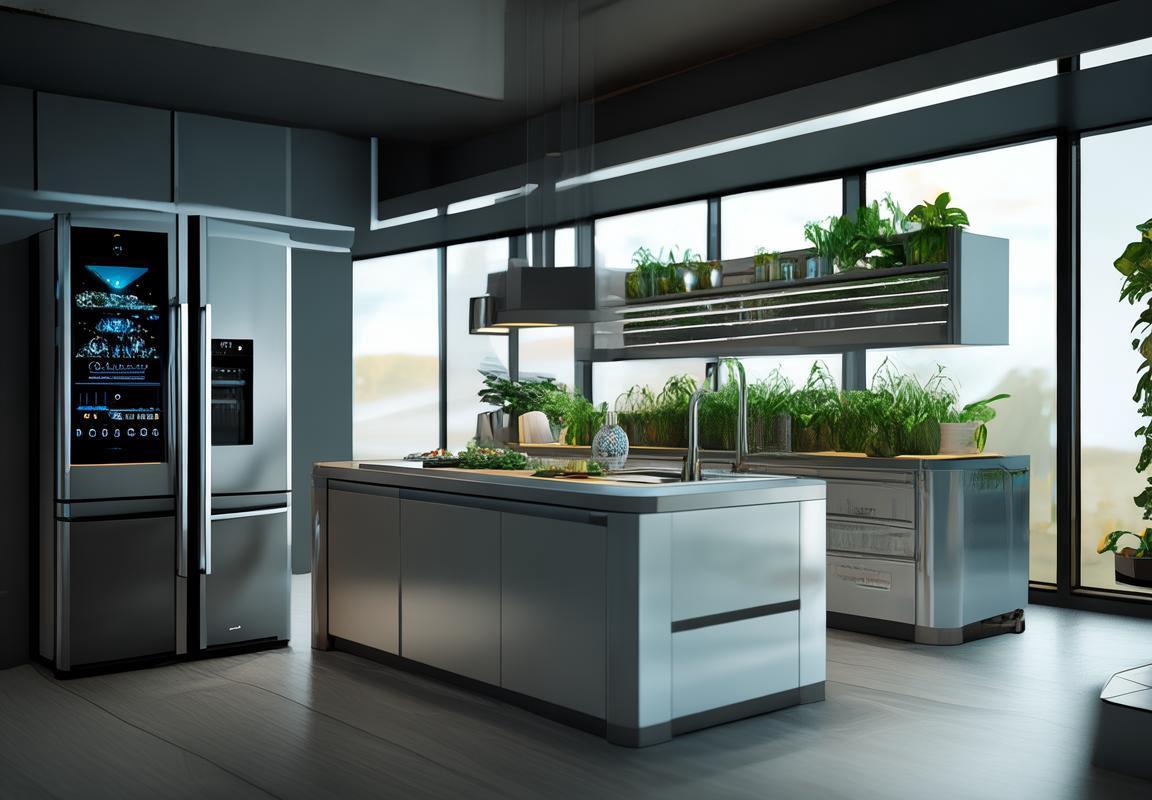
Conclusion:TheImportanceofSafetyandQualityintheKitchenApplianceIndustry
In today’s fast-paced world, the kitchen has evolved from a mere place for cooking to a hub of culinary innovation and style. The kitchen appliance industry has played a pivotal role in this transformation, with European and American brands leading the charge. As consumers, we place a high value on safety and quality when selecting our kitchen essentials. This conclusion explores the significance of these factors in the kitchen appliance industry and why they remain paramount.
Safety, without a doubt, is the cornerstone of the kitchen appliance industry. The stakes are high when it comes to kitchen appliances, as they are directly linked to our daily routines and the health of our families. The GOST R IEC 60335-2-9 certification serves as a beacon of safety, ensuring that appliances meet rigorous European standards. This certification not only guarantees the absence of fire hazards but also addresses electrical safety, mechanical hazards, and thermal and mechanical stresses.
Quality, on the other hand, encompasses the durability, reliability, and performance of kitchen appliances. Consumers seek products that not only look good but also deliver on their promises. The best appliances are those that combine cutting-edge technology with timeless design, offering both convenience and aesthetic appeal. Brands that prioritize quality often invest in research and development, ensuring that their products stand the test of time and usage.
The kitchen appliance industry has witnessed a surge in innovation, with new trends shaping the way we interact with our appliances. Smart technology has become a staple, allowing users to control their kitchen gadgets remotely via smartphones and tablets. This integration of the digital world into the kitchen has not only made appliances more user-friendly but also more efficient and eco-friendly.
European brands have long been known for their attention to detail and craftsmanship. From the sleek designs of German appliances to the sturdy reliability of Italian cookware, European consumers have come to expect a certain level of quality and performance. American brands, on the other hand, have embraced technology and innovation, offering appliances that are not only high-performing but also versatile and adaptable to various cooking styles.
Despite the advancements and the growing demand for high-quality kitchen appliances, the industry faces several challenges. One of the most significant challenges is navigating the complex web of regulatory differences between Europe and America. Each region has its own set of safety standards and certifications, making it a daunting task for manufacturers to ensure compliance across the board. This necessitates a deep understanding of local regulations and often requires additional testing and certification processes.
Consumer demands are also continuously evolving. While safety and quality remain top priorities, consumers are now seeking appliances that are not only functional but also sustainable and environmentally friendly. The push for energy-efficient appliances and the growing popularity of green certifications like the Energy Star label reflect this shift in consumer preference. Brands that fail to adapt to these changing demands risk falling behind in an increasingly competitive market.
Looking ahead, the kitchen appliance industry is poised for further growth and innovation. Smart kitchens are becoming more prevalent, with appliances that can learn from user habits and adjust settings accordingly. Voice-activated controls and the integration of artificial intelligence are just a few examples of how technology is reshaping the kitchen landscape.
The future of the European and American kitchen appliance markets will likely see a greater emphasis on sustainability and energy efficiency. As climate change continues to be a pressing issue, consumers and manufacturers alike will be under increasing pressure to reduce their environmental footprint. This could lead to the development of more energy-saving technologies and the adoption of materials that are easier to recycle.
In conclusion, the kitchen appliance industry is a testament to the importance of safety and quality. As consumers, we rely on these factors to ensure that our kitchens are not only safe spaces but also equipped with appliances that enhance our daily lives. The industry’s commitment to innovation and compliance with stringent safety standards will continue to drive the market forward, offering consumers a wide array of options that cater to their needs and preferences. Whether it’s the sleek design of a European appliance or the cutting-edge technology of an American model, the common denominator remains the unwavering focus on safety, quality, and sustainability.